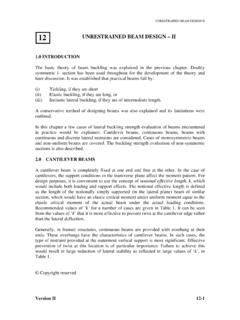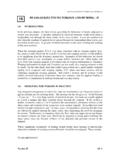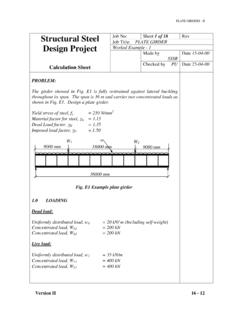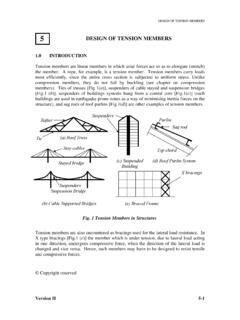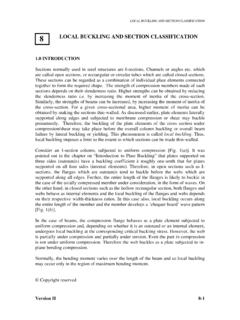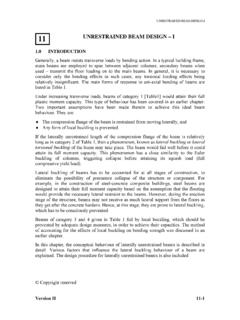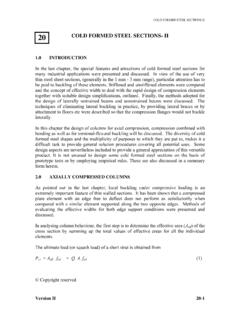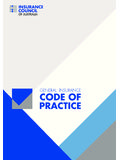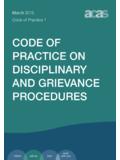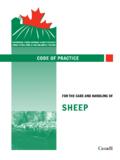Transcription of Indian Code of Practice - INSTITUTE FOR STEEL …
1 IS: 800 - Indian code of Practice for Construction in STEEL and its Comparison with International Codes Mr. Arijit Guha-Asst. General Manager (C & S), Mr. M M Ghosh-Asst. General Manager (C & S) INSTITUTE for STEEL Development & Growth (INSDAG) Ispat Niketan, 52 / 1A Ballygunge Circular Road, Kolkata 700 019, India Email: ABSTRACT The state-of-the-art design finds its way into Practice through specifications and stipulations of relevant codes. In India, several development work has taken place for improving the material properties of STEEL , yet the design is uneconomical at times due to non-availability of efficient sections.
2 The design codes are being updated and modified incorporating the results from the various researches and developments being carried out at the various R & D Centres in the country. IS: 800, which was prepared in 1984 and reaffirmed in 1991, was outdated. This code was based on Allowable Stress Design, which was in vogue till the 1960 s all over the world. The more modern Limit State Method developed and adapted in advanced countries in the early 1970 s is technologically improved and results in significant economy in the completed structures. Considering that the current Practice all over the world is based on Limit State Method (LSM) or Load and Resistance Factor Design Method, it was found essential during the year 2002 2003 that the code of Practice for use of STEEL in general construction should be modified to LSM while maintaining Allowable Stress Design as a transition alternative.
3 The code was thus prepared and published by the Bureau of Indian Standards (BIS) in 2008. This paper highlights the essential contents of IS: 800 -2007 while following Limit State Method, the corresponding stipulations as adopted by other International codes, comparison with WSM and the benefits derived thereof. The findings are encouraging as the philosophy is more scientific. The country is in the threshold of development. The demand of STEEL in the infra sector and urban are is positive. Survey reveals that a huge untapped demand remains in the rural area. The forecasting of demand is encouraging. To meet up this expectation the other parameters in the supply chain needs to be in place. One of the main agents of change is the development of value rich codes for designs.
4 KEY WORDS Allowable Stress Design, Factor of Safety, Limit State Method, Load and Design Method, Serviceability Limit State, Ultimate Limit State. 1. INTRODUCTION The Indian Construction is often guided by STEEL , cement as the prime material of construction. Cement requires a healthy partnership with aggregates and STEEL to form the structural element called concrete. STEEL , on the other hand has an advantage of partnering with concrete and also can go alone as an individual structural element. In order to reap the advantages of STEEL the whole supply chain needs to be in place. Use of STEEL as a preferred material for Design Engineers can be increased if the design codes are modified, updated with the scientific researches , user friendly etc.
5 The design Engineers will then be inclined in deciding on using STEEL . This will increase the consumption in the country. Early report states that the per capita consumption of the material is though 48 Kgs which is below average, but the rise to this value has been steep. The market has a huge potential in the rural sector. In order to tap this untapped source various measures and policies are being framed mainly by the manufacturers. Availability of STEEL at the doorstep is one such initiative. Seeing is believing is the truth behind the success of use of STEEL . Convincing the rural sector and transforming this belt with STEEL will serve as an eye opener. The forecasting in demand till 2020 is highly encouraging.
6 In order to match with this expectation, the other related parameters need to be in line too. Modernising codes are one of them. IS-800, the umbrella code for general structural STEEL design which was published in 1984 reaffirmed in 1991 was much outdated with outdated philosophy. The working stress method or the Allowable stress method was prepared long back. In the mean time the methodology of design of STEEL structures had undergone major changes due to two decades of research and the state-of-the-art practiced all over the world. Since an outdated code would be detrimental to the very purpose of the code of Practice itself, the basic code for design of STEEL structures needed updating using recent research findings and practices in developed countries.
7 Thus, the code was revised under the supervision of expert committee constituted by the Bureau of Indian standards (BIS 2008). The code had ultimately been published in February 24,2008. Almost all advanced countries are now taking advantage of efficient code stipulations, and the current Practice all over the world is based on either Limit State Method (LSM) or Load and Resistance Factor Design (LRFD) method. Table 1, shows design format of STEEL structures adopted in some of the countries. Table 1: Countries and their Design Format. (AISC 13th Ed, BS 5950 2000) Australia, Canada, China, Europe, U K, Japan Limit State Method (LSM) U S A Load and Resistance Factor Design (LRFD) India Allowable Stress Design (ASD) Since LSM has become the design philosophy in most of the international design standards due to its rationality and consequent economy achieved in design, it was felt that IS: 800 should also be modified to LSM while maintaining Allowable Stress Design (ASD) as a transition alternative.
8 This would also help the designers to understand both the design methods and utilize the most advantageous one. Even in USA, the codes on design of STEEL structures, still maintain a dual standards approach, viz. ASD as well as LRFD. It was also felt that these changes from ASD to LSM in the design code would render STEEL design novel and will facilitate accuracy of design. However, it is important to understand the differing philosophies of Allowable Stress Method of Design and Limit State Method as they apply to design of STEEL structures. Allowable Stress Design (Bandyopadhyay et al 2002, 2003, 2004) Allowable Stress Design is an approach in which structural members are designed so that unit stresses do not exceed a pre-defined allowable stress.
9 The allowable stress is defined by a limiting stress divided by a factor of safety, so that, in general, it is expressed in the form of: factual < fallowable and the allowable stress is given by fallowable = (fy/Fs) fy = minimum yield stress and Fs = factor of safety The factor of safety (Fs) used in the allowable stress design method, however, is fixed. This means that no matter how variable the loads are, in terms of either frequency or magnitude, the factor of safety is always the same. These deficiencies as well as advanced knowledge of strength of material beyond yield point and its plastic plateau led to the development of an alternative to the ASD based on the limit states of a material.
10 According to a different school of thought, linear elastic method can also take care of the issues related to design of structural members, and may be considered sufficient to address instability, dynamic effects and fatigue, since all these are based on similar variants of the basic slope deflection equation. However, this will call for certain modifications of the existing code stipulations, wherein real advantage of limit state concept can be derived from a totally elastic stress code . This would improve checking of structural design by reducing the number of clauses and complexity involved in limit state concept. Similarly, a better way than Effective length methods can be adopted using Merchant Rankine approach to find the limiting load of the whole structure, instead of the separate values for different struts (for using different Column Curves ) such that 1/Plimit = 1/Pfield + 1/Pcritical Where, Plimit, Pfield, and Pcritical are the factored limit load of the structure, load at plastic collapse ignoring instability, and the elastic critical load of the structure respectively.
